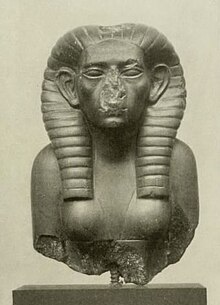
Back ሶበክነፈሩ Amharic سبك نفرو Arabic سبك نفرو ARZ Neferusobek AST Нефрусобек Bulgarian Sobekneferu Catalan Sebeknofru Czech Нефрусебек CV Nofrusobek German Νεφρουσομπέκ Greek
| Sobekneferu | ||||||||||||||||||||||||||||||||||||||||||||||||||||||||||||||||||||||||||||||||||||||||||||||||||||||||||||||||||||||||||||||||||||||||||||||||||
|---|---|---|---|---|---|---|---|---|---|---|---|---|---|---|---|---|---|---|---|---|---|---|---|---|---|---|---|---|---|---|---|---|---|---|---|---|---|---|---|---|---|---|---|---|---|---|---|---|---|---|---|---|---|---|---|---|---|---|---|---|---|---|---|---|---|---|---|---|---|---|---|---|---|---|---|---|---|---|---|---|---|---|---|---|---|---|---|---|---|---|---|---|---|---|---|---|---|---|---|---|---|---|---|---|---|---|---|---|---|---|---|---|---|---|---|---|---|---|---|---|---|---|---|---|---|---|---|---|---|---|---|---|---|---|---|---|---|---|---|---|---|---|---|---|---|---|
| Neferusobek Scemiophris from Greek: Σκεμίοφρις | ||||||||||||||||||||||||||||||||||||||||||||||||||||||||||||||||||||||||||||||||||||||||||||||||||||||||||||||||||||||||||||||||||||||||||||||||||
 Statue of Sobekneferu which was lost during World War II | ||||||||||||||||||||||||||||||||||||||||||||||||||||||||||||||||||||||||||||||||||||||||||||||||||||||||||||||||||||||||||||||||||||||||||||||||||
| Pharaoh | ||||||||||||||||||||||||||||||||||||||||||||||||||||||||||||||||||||||||||||||||||||||||||||||||||||||||||||||||||||||||||||||||||||||||||||||||||
| Reign | 3 years, 10 months, and 24 days according to the Turin Canon in the mid-18th century BC[1][2][a] | |||||||||||||||||||||||||||||||||||||||||||||||||||||||||||||||||||||||||||||||||||||||||||||||||||||||||||||||||||||||||||||||||||||||||||||||||
| Predecessor | Amenemhat IV | |||||||||||||||||||||||||||||||||||||||||||||||||||||||||||||||||||||||||||||||||||||||||||||||||||||||||||||||||||||||||||||||||||||||||||||||||
| Successor | Sobekhotep I or Wegaf | |||||||||||||||||||||||||||||||||||||||||||||||||||||||||||||||||||||||||||||||||||||||||||||||||||||||||||||||||||||||||||||||||||||||||||||||||
| ||||||||||||||||||||||||||||||||||||||||||||||||||||||||||||||||||||||||||||||||||||||||||||||||||||||||||||||||||||||||||||||||||||||||||||||||||
| Consort | Amenemhat IV? | |||||||||||||||||||||||||||||||||||||||||||||||||||||||||||||||||||||||||||||||||||||||||||||||||||||||||||||||||||||||||||||||||||||||||||||||||
| Father | Amenemhat III | |||||||||||||||||||||||||||||||||||||||||||||||||||||||||||||||||||||||||||||||||||||||||||||||||||||||||||||||||||||||||||||||||||||||||||||||||
| Burial | Northern Mazghuna pyramid? | |||||||||||||||||||||||||||||||||||||||||||||||||||||||||||||||||||||||||||||||||||||||||||||||||||||||||||||||||||||||||||||||||||||||||||||||||
| Dynasty | Twelfth Dynasty | |||||||||||||||||||||||||||||||||||||||||||||||||||||||||||||||||||||||||||||||||||||||||||||||||||||||||||||||||||||||||||||||||||||||||||||||||
Sobekneferu or Neferusobek (Ancient Egyptian: Sbk-nfrw meaning 'Beauty of Sobek') was a pharaoh of ancient Egypt and the last ruler of the Twelfth Dynasty of the Middle Kingdom. She ascended to the throne following the death of Amenemhat IV, possibly her brother or husband, though their relationship is unproven. Instead, she asserted legitimacy through her father Amenemhat III. Her reign lasted 3 years, 10 months, and 24 days, according to the Turin King List.
Distinguishing herself from prior female rulers, Sobekneferu adopted the full royal titulary. She was also the first ruler to associate herself with the crocodile god Sobek through her name. Contemporary evidence for her reign is scant. There are a few partial statues – one with her face – and inscriptions that have been uncovered. It is assumed that the Northern Mazghuna pyramid was intended for her, though this assignment is speculative with no firm evidence to confirm it. The monument was abandoned immediately after its substructure was completed. A papyrus discovered in Harageh mentions a place called Sekhem Sobekneferu that may refer to the pyramid. Her rule is attested on several king lists.
- ^ Schneider 2006, p. 174.
- ^ a b Krauss & Warburton 2006, pp. 480 & 492.
- ^ Keller 2005, p. 294.
- ^ Oppenheim et al. 2015, p. xix.
- ^ Gillam 2001, p. 301.
- ^ Redford 2001, Egyptian King List.
- ^ Grimal 1992, p. 391.
- ^ Lehner 2008, p. 8.
- ^ Clayton 1994, p. 84.
- ^ Dodson & Hilton 2004, p. 289.
- ^ Shaw 2003, p. 483.
- ^ Cooney 2018, p. 6.
- ^ Wilkinson 2010, p. xv.
- ^ a b c d e Leprohon 2013, p. 60.
- ^ Cooney 2018, p. 87.
- ^ Cooney 2018, p. 88.
- ^ The British Museum n.d., Description.
Cite error: There are <ref group=lower-alpha> tags or {{efn}} templates on this page, but the references will not show without a {{reflist|group=lower-alpha}} template or {{notelist}} template (see the help page).
